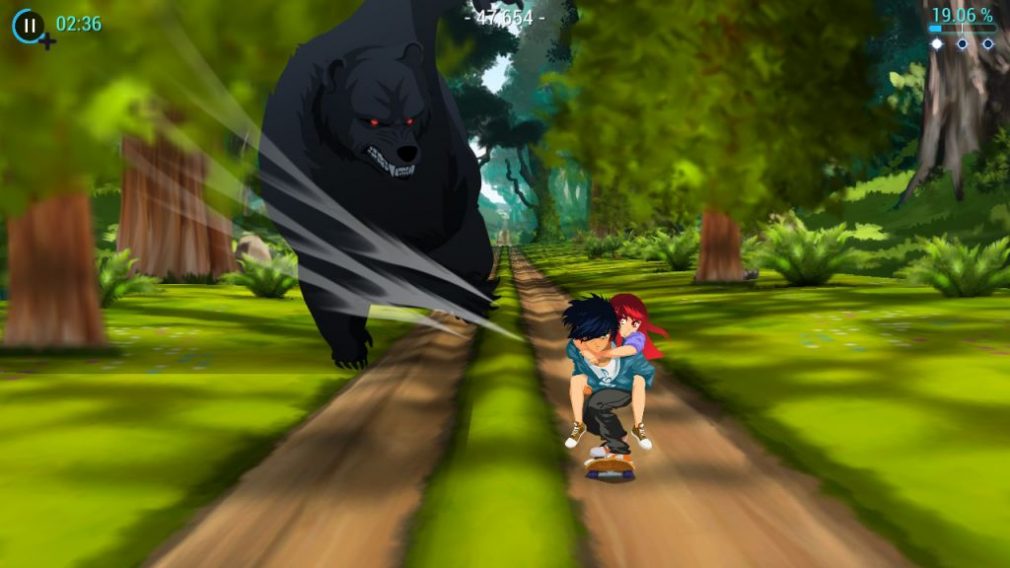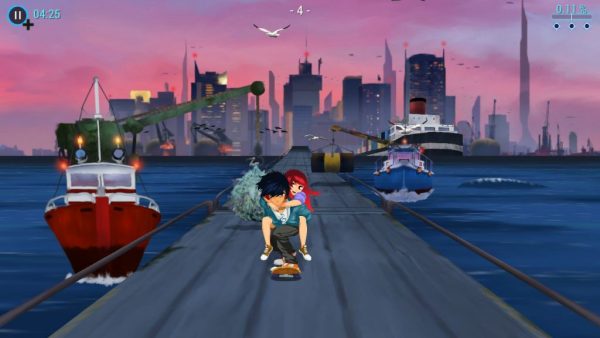Also On: PC
Publisher: Plug In Digital
Developer: Digixart / Midgar Studio
Medium: Digital
Players: 1
Online: No
ESRB: E10+
On paper, there?s no reason why Lost in Harmony shouldn?t work. It?s part endless runner, part rhythm game. Theoretically, there?s nothing inherent in either genre that should prevent it from meshing nicely with the other. In fact, done well, it?s not hard to imagine how the two genres complement each other nicely.
That?s how it should work, at least. In practice, Lost in Harmony plays like an endless runner where the developers decided to add rhythm game elements at the very last second, but forgot to make any changes to accommodate the new genre. There are endless runner bits, and rhythm game bits, but the two bits seldom, if ever, overlap.
This might have been fine if one or both of the bits were decent on their own, but this isn?t the case either. Take the endless running. Whether you?re playing Kaito?s Adventure or M.I.R.A.I.?s Escape — more on what those two choices entail in a few moments — you?re controlling characters who are skateboarding/running towards the screen, and you have obstacles coming at you from the front and from behind. Unfortunately, when the obstacles are coming at you from the front, it?s hard to get a proper sense of when they?ll suddenly appear on the screen, and when they?re coming up from behind it?s difficult to tell how fast they are. Further, in Kaito?s case, you have the added challenge of him carrying his friend on his back, and the two of them together are large enough that they occasionally block your view. It makes for an experience where, far too frequently, it feels like the game is actively working against you.
That said, the endless running is far preferable to rhythm part of the game — largely because there?s so little rhythm to Lost in Harmony. Occasionally the music syncs up with the action, but these moments are few and far between, feeling more like happy accidents than intentional design choices. There are also changes in how the game asks you to match the beats that come off as a little sudden: one moment you?re gliding along a shimmery line, the next you?re expected to tap the A/B/X/Y buttons in time with…something near the beat, sometimes. As I said, the implementation is a little off.
Speaking of abrupt shifts, however, nothing in Lost in Harmony?s gameplay has anything on the difference between Kaito?s Adventure or M.I.R.A.I.?s Escape. In the latter, you?re playing as a robot escaping from a lab; in the former, you?re playing as a young kid helping his friend deal with cancer. No matter how cute Lost in Harmony?s developers tried to make M.I.R.A.I., or how much they try tug at the heartstrings, it just doesn?t compare or match up with the heaviness of childhood cancer.
Even if it did, though, it wouldn?t address Lost in Harmony?s core issue, which is that the gameplay just isn?t that good. The endless running lacks decent timing, the rhythm is pretty arrhythmic, and the two halves just never feel like they gel together.
Plug In Digital provided us with a Lost in Harmony Switch code for review purposes.



